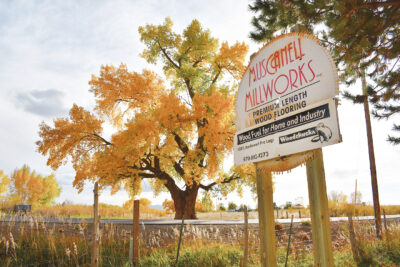If you’re reading this publication, you’ve undoubtedly been asked recently, “what’s going on with lumber?”
The answer is long, with many facets, and is similar to what a host of other industries – perhaps most notably semiconductors – are experiencing.
At the beginning of the pandemic, wood product manufacturers were operating under the same uncertainty as the rest of the country. The conventional wisdom at the time was that stay-at-home orders would curb construction, thus reducing demand for wood products. Many mills curtailed production in anticipation of worker shortages and reduced demand. At the same time, many wholesale and retail lumber customers significantly reduced their inventory levels.
Of course, we now know that the conventional wisdom was off the mark, by a long shot. The demand for wood products quickly rebounded. The National Association of Home Builders reported that the pandemic drove increased demand for remodeling projects as people stayed home and tackled DIY projects. Restaurants rushed to build outdoor accommodations. Low interest mortgage rates pushed a rush of home buying. Homes are going under contract at a faster rate than they are listed for sale even though new home listings are up 19.1 percent over last year. Permits for single- and multi-family projects were up 25.3 percent and 20.4 percent, respectively.
Wood products manufacturers were immediately deemed “essential workers” by the federal government with help from the American Wood Council’s advocacy. However, construction was left out of the government’s initial guidance. AWC stepped up to help fix that in the second round of guidance so many states could allow home building to resume amid this rapidly growing demand.
To help meet this unparalleled need for wood products, North American Softwood sawmill capacity increased by 1.4 billion board feet in the last year, according to Forisk. Most of that increased capacity – 1.1 billion board feet – was from manufacturing in the U.S. South. In fact, the entire wood products manufacturing sector continues to produce at the highest levels since the Great Recession, according to the Federal Reserve Board.
Many wood products companies have announced significant investments to expand the capacity of existing mills, however, lead times to get the new equipment remains long. In some cases, machinery is backordered up to 24 months – potentially extending the usual 12 to 24 months it would take to complete these types of projects. Manufacturing expansion projects are a long-term solution that will support increased capacity, but not until 2022 at best.
Despite these already high levels of production, and investments from manufacturers to upgrade and expand mill capacity, the unprecedented demand still exceeds the current supply.
Importantly, these positive trends of high production and increased expansion come despite the wood products industry’s sustained constraints due to severe weather events, labor shortages and transportation concerns. The most immediate opportunity to address constraints to lumber supply is to focus on transportation and workforce limitations. These challenges were present before the pandemic and have exacerbated the current situation.
The wood products industry is far from the only commodity that is experiencing increased demand, nor is it the only industry to face worker shortages and transportation limitations. Addressing these constraints will be the most fruitful endeavor for meaningful relief.
Visit the American Wood Council at awc.org.









